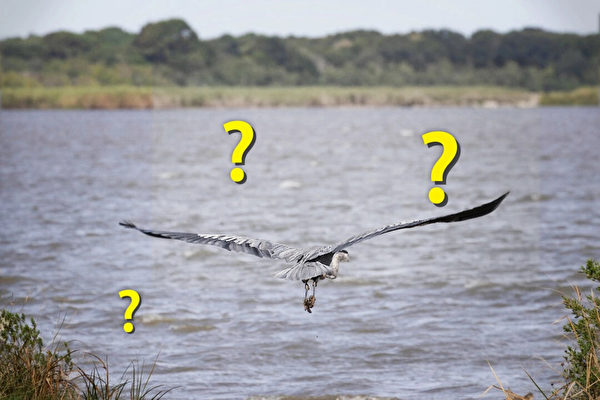American photographer Jacob Hall captured a rare moment when a bobcat hidden on the riverbank successfully ambushed a great blue heron, leaving him pleasantly surprised.
The Anahuac National Wildlife Refuge near Houston, Texas, is home to a variety of wildlife such as alligators, large cats, and blue herons. It is an ideal location for capturing wildlife in their natural habitat, which is why Jacob often visits there to capture wild animals in their natural poses.
While driving past a ranch near the wildlife refuge one day, he witnessed a great blue heron flying in the sky. Upon seeing this, he immediately stopped the car and grabbed his camera to start shooting.
“I suddenly noticed a great blue heron flying in the distance, so I quickly took two photos,” Jacob told The Epoch Times.
However, during the shooting process, he noticed something unusual.
“After taking the first photo, just a few seconds later, I took the second one,” he said. “After taking the second photo, I was puzzled as to why the great blue heron suddenly fell from the sky.”
It was only upon careful examination of the photos that he realized what he had captured. In the first photo, he discovered a hidden predator that dragged the great blue heron into the water and feasted on it. Can you spot this sneaky predator in his photos?
In fact, the photo was taken in October 2023, but it was only recently shared by the United States Fish and Wildlife Service on X platform and subsequently reported by various media outlets.
“Do you see it? We’re not talking about the great blue heron here!” The department humorously wrote in the headline.
So, have you found it now?
In that moment, when Jacob pressed the shutter for the second time, a bobcat lying in ambush on the shore suddenly darted out from the dense dry grass and swiftly pounced on the flying heron, dragging the unsuspecting bird into the water to become a meal for the great cat.
The U.S. Fish and Wildlife Service explained in their post that this raptor is just a part of the natural life cycle.
They wrote, “For some, witnessing negative interactions between wild animals as this photographer in the Texas coastal area captured can be hard to watch, but this is a key component of how our ecosystem functions.”
“The great blue heron preys on small fish, frogs, or mammals; the bobcat preys on the great blue heron, and scavengers like black vultures clean up what the bobcat leaves behind,” they wrote, “All these nutrients return to the ecosystem to participate in the cycle again.”
Capturing what some media call a “once-in-a-lifetime” moment is “something I will never forget,” Jacob told this newspaper. “I just happened to be in the right place at the right time.”

